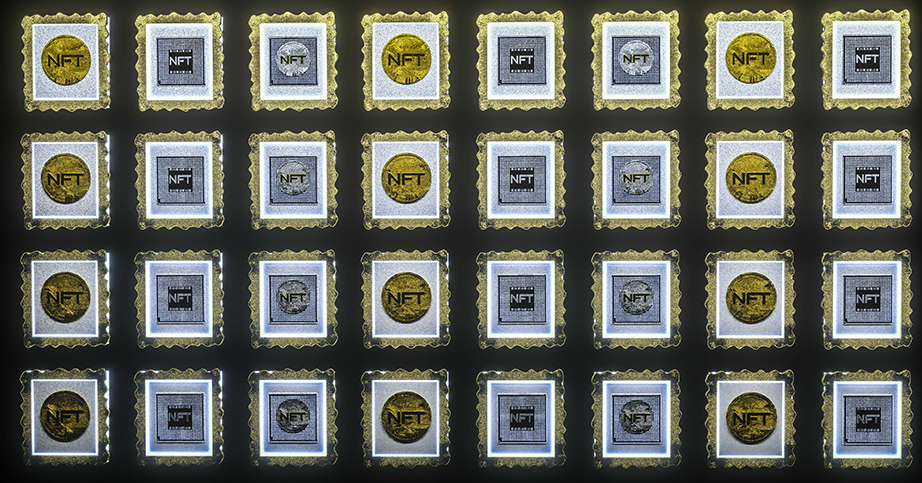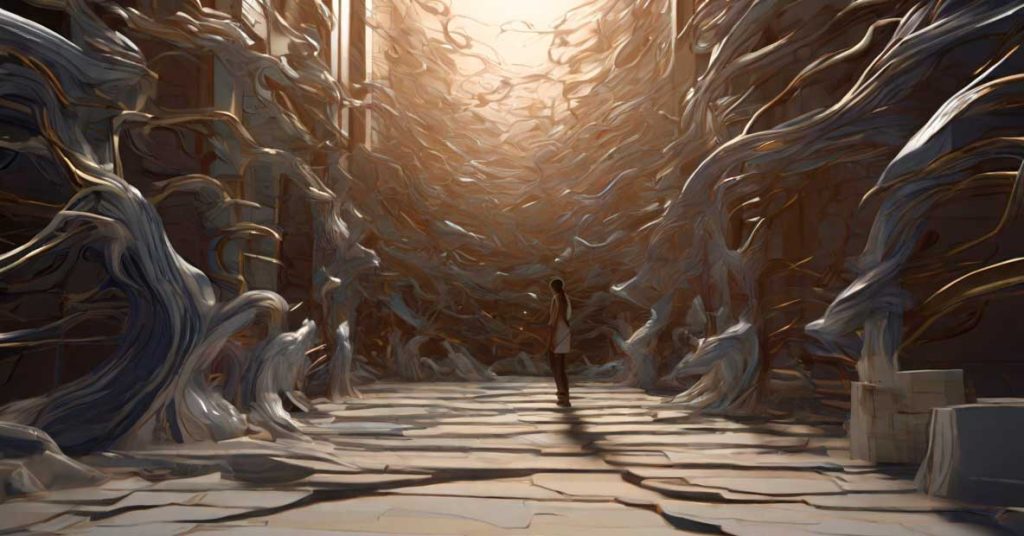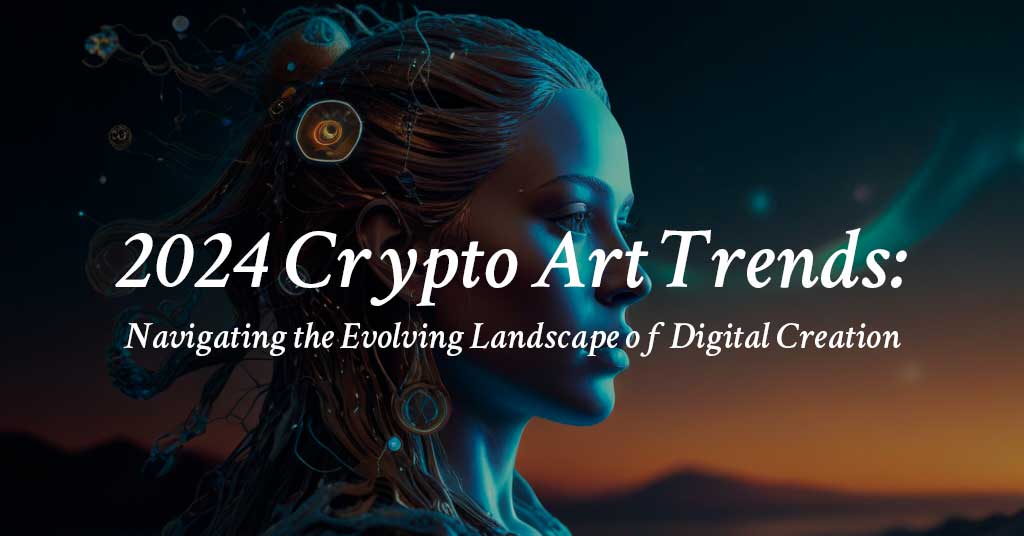
Introduction
The world of digital art is undergoing a radical transformation thanks to the emergence of crypto art trends. Crypto art refers to the creation, verification, and exchange of digital artworks using blockchain technology, which ensures their uniqueness, authenticity, and scarcity. Crypto art is closely linked to non-fungible tokens (NFTs), which are digital certificates of ownership and origin that can be traded on decentralized platforms. NFTs have opened up new opportunities for artists and collectors, as they allow them to circumvent traditional gatekeepers, lower transaction costs, and access a wider audience.
In this article, we will examine some of the most prominent crypto art trends that are shaping the future of digital creation in 2024 and beyond. These trends include:
- Embracing immersive experiences
- Democratizing art ownership and access
- Integrating AI and machine learning
- Metaverse integration
- Embracing environmental responsibility
Let’s dive into each of these trends and see how they are transforming the crypto art landscape.
Embracing Immersive Experiences
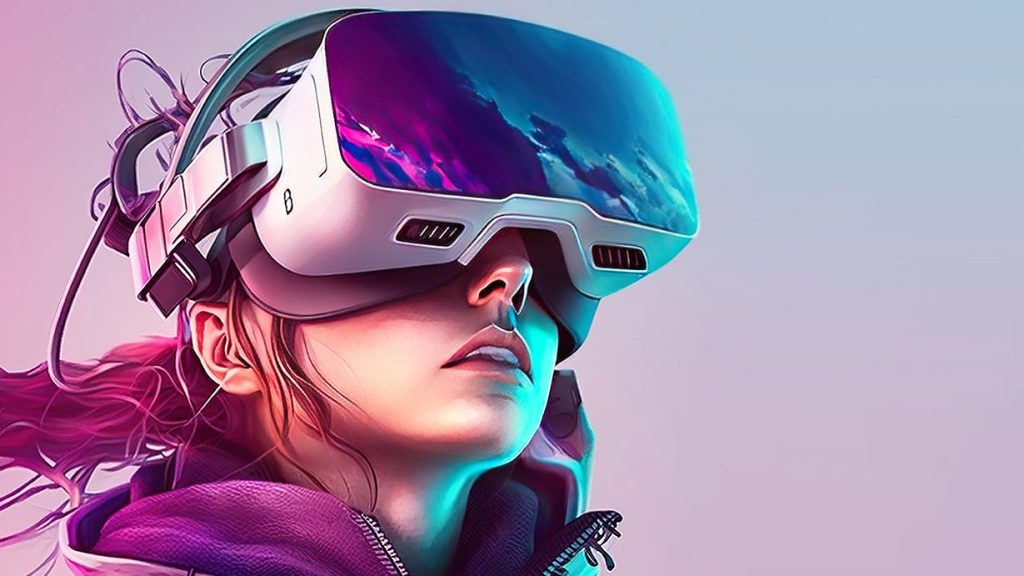

NFTs Beyond Static Images: Revolutionizing Art with Interactive Experiences
One of the most exciting trends in crypto art is the emergence of immersive art experiences, where NFTs go beyond static images to create interactive and engaging artworks. These artworks can include animations, sounds, music, videos, games, and other forms of interactivity that enhance the aesthetic and emotional impact of the art. For example, some crypto artists use generative art techniques to create NFTs that change and evolve over time, depending on the input of the viewer or the environment. Others use augmented reality (AR) and virtual reality (VR) to create immersive and realistic environments that showcase their crypto artworks.
Immersive art experiences offer several benefits for both artists and collectors. For artists, they provide new ways to express their creativity and innovation, as well as to differentiate themselves from the competition. For collectors, they offer more value and enjoyment, as they can interact with the artworks and experience them in different ways. Immersive art experiences also create more opportunities for socialization and collaboration, as they can connect artists and collectors across the globe and foster a sense of community and belonging.
Democratizing Art Ownership and Access
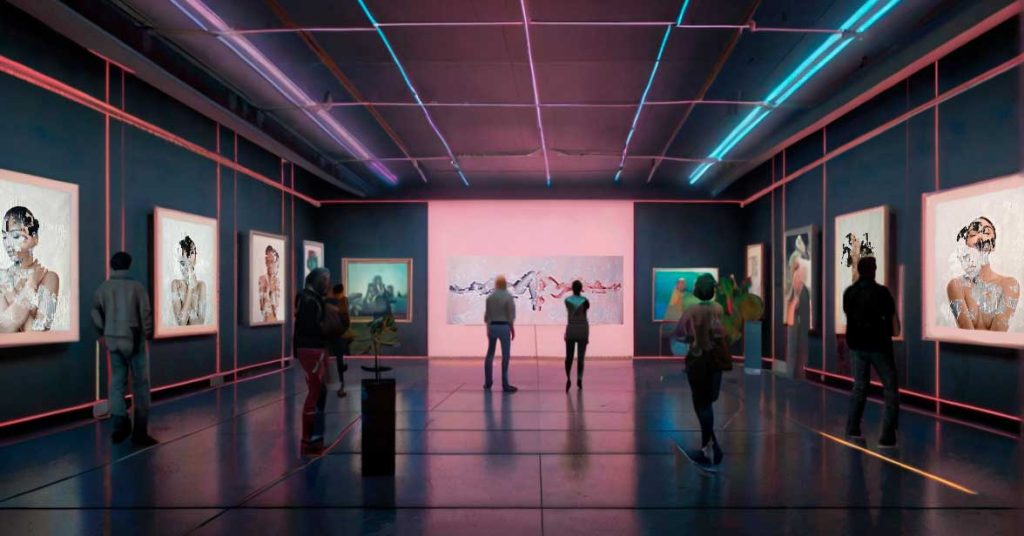

NFTs as Tools for Ownership and Accessibility: Bridging the Gap in Art Appreciation
Another key trend in crypto art is the democratization of art ownership and access, which is enabled by the use of NFTs as tools for ownership and accessibility. NFTs are democratizing art ownership by empowering artists and collectors worldwide, regardless of their location, background, or status. Artists can create and sell their artworks directly to their fans and supporters, without relying on intermediaries such as galleries, auction houses, or museums. Collectors can buy and sell their artworks easily and securely, without worrying about authenticity, provenance, or fraud. NFTs also create a more transparent and fair art market, as they provide verifiable and immutable records of the history and ownership of the artworks.
NFTs are also democratizing art access, by making crypto art available to a wider audience beyond traditional art institutions. Anyone with an internet connection and a digital wallet can access and appreciate crypto art, regardless of their physical location, financial situation, or cultural background. Crypto art also offers more diversity and inclusivity, as it showcases artworks from different genres, styles, cultures, and perspectives. Crypto art also fosters more education and awareness, as it exposes people to new forms of art and encourages them to learn more about the artists and their stories.
Integrating AI and Machine Learning
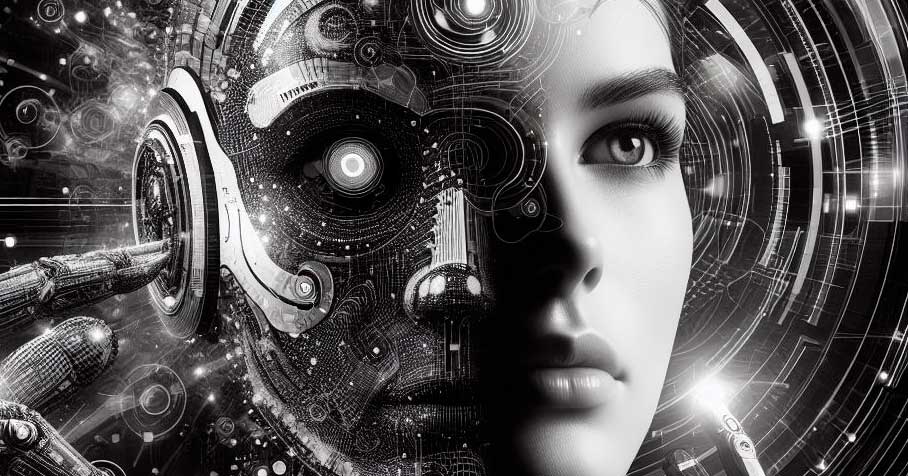

AI-Powered Art: Unleashing Creativity and Innovation with Artificial Intelligence
A third trend in crypto art is the integration of artificial intelligence (AI) and machine learning (ML) in the creation and consumption of crypto artworks. AI and ML are technologies that enable machines to perform tasks that normally require human intelligence, such as learning, reasoning, and decision making. Crypto artists are increasingly using AI and ML to create unique and innovative artworks, either by collaborating with machines or by letting machines create autonomously. For example, some crypto artists use AI and ML to generate new images, sounds, or texts, based on their inputs or preferences. Others use AI and ML to analyze and optimize their artworks, such as by enhancing the quality, style, or composition of their images.
AI-powered art offers several advantages for both artists and collectors. For artists, it provides new sources of inspiration and experimentation, as well as new challenges and opportunities for learning and improvement. For collectors, it offers more variety and novelty, as well as more insight and understanding of the artworks and their processes. AI-powered art also raises new questions and debates about the nature and value of art, such as what constitutes creativity, originality, and authorship, and how to evaluate and appreciate art.
Metaverse Integration: Expanding the Reach of Crypto Art Trends in 2024
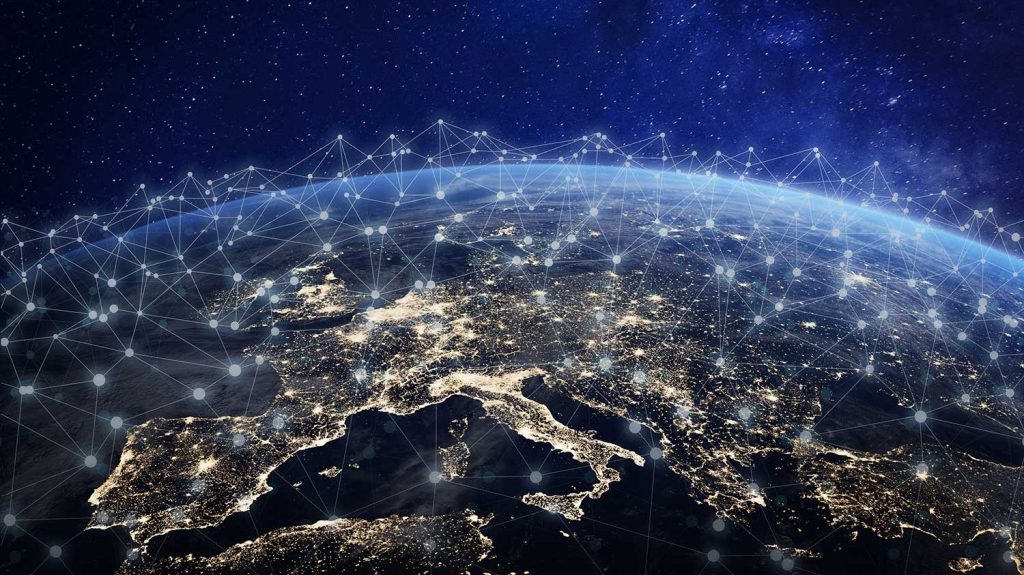

Metaverse Convergence: Integrating Crypto Art into the Virtual Realm
A fourth trend in crypto art is the integration of crypto art into the metaverse, which is a term that refers to the convergence of physical, digital, and virtual realities. The metaverse is a collective virtual space that consists of various platforms, applications, and environments, where people can interact, socialize, and create. Crypto art is becoming an integral part of the metaverse, as it is being integrated into various virtual worlds, such as Decentraland, Cryptovoxels, and Somnium Space. These virtual worlds allow users to create, display, and trade their crypto artworks, as well as to experience them in immersive and interactive ways. For example, users can visit virtual galleries and museums, attend virtual exhibitions, and participate in virtual games and events, all related to crypto art.
Metaverse integration offers several benefits for both artists and collectors. For artists, it provides new platforms and audiences for their artworks, as well as new possibilities for collaboration and innovation. For collectors, it provides new ways to enjoy and showcase their artworks, as well as new opportunities for networking and community building. Metaverse integration also enhances the value and significance of crypto art, as it creates more demand and scarcity for the artworks, as well as more meaning and relevance for the users.
Embracing Environmental Responsibility
Sustainable Practices in Crypto Art: Addressing Environmental Concerns
A fifth trend in crypto art is the embrace of environmental responsibility, which is driven by the awareness and concern of the environmental impact of blockchain technology and NFTs on crypto art. Blockchain technology and NFTs are based on the use of cryptography and consensus mechanisms, which require a lot of computational power and energy consumption. This results in a high carbon footprint and greenhouse gas emissions, which contribute to global warming and climate change. Crypto art is therefore facing criticism and backlash from environmental activists and advocates, who question the sustainability and ethics of the industry.
In response to these environmental concerns, crypto art is adopting and promoting sustainable practices, such as using renewable energy sources, reducing energy consumption, and offsetting carbon emissions. Crypto art is also exploring and supporting alternative and innovative solutions, such as using more efficient and eco-friendly blockchain protocols, such as proof-of-stake (PoS) or proof-of-authority (PoA), or using non-blockchain platforms, such as Holochain or IPFS. Crypto art is also raising awareness and education, as well as donating and contributing to environmental causes and organizations.
Conclusion
Crypto art is a dynamic and evolving industry, that is constantly influenced by new trends and innovations. In this article, we have discussed some of the key trends that are expected to shape the future of crypto art in 2024 and beyond, such as:
- Embracing immersive experiences
- Democratizing art ownership and access
- Integrating AI and machine learning
- Metaverse integration
- Embracing environmental responsibility
These trends are transforming the crypto art landscape, by creating new possibilities and challenges for artistic expression, ownership, and access. They are also creating new opportunities and responsibilities for artists and collectors, as well as for the wider society and environment. Crypto art is therefore not only a form of art, but also a form of culture and movement, that reflects the world we live in.
If you are interested in crypto art, we encourage you to actively participate in this evolving landscape of digital art and ownership. Whether you are an artist or a collector, a beginner or an expert, a fan or a critic, you can contribute to the growth and development of crypto art, by creating, buying, selling, or sharing your crypto artworks, as well as by learning, exploring, and engaging with the crypto art community. By doing so, you will not only enjoy the benefits and pleasures of crypto art, but also help shape its future and impact.
Crypto art is a powerful and transformative force, that has the potential to democratize creativity and expand the reach of art to a global audience, also a catalyst and a mirror, that can inspire and reflect the changes and challenges of our society and environment. Crypto art is therefore more than just art, it is a vision and a mission, that can make the world a better and more beautiful place.
FAQs
Q: What is the crypto art market?
A: The crypto art market is the online marketplace where crypto art is created, verified, and traded. Crypto art is digital art that uses blockchain technology and non-fungible tokens (NFTs) to authenticate and represent ownership of artworks. The crypto art market is powered by various platforms, such as OpenSea, Rarible, or SuperRare, that allow artists and collectors to mint, buy, sell, or browse crypto artworks and NFTs. The crypto art market is growing rapidly, as it offers new opportunities and challenges for artistic expression, ownership, and access.
Q: What are the benefits of crypto art?
A: Crypto art benefits artists and collectors by allowing them to sell and buy artworks directly and securely, providing transparent and fair records of ownership and history, making art accessible and diverse to a global audience and exposing them to new forms and styles of art
Q: What are the challenges of crypto art?
A: Crypto art faces challenges such as:having a high environmental impact and carbon footprint, facing criticism and backlash from environmentalists and activists, operating in a legal and regulatory gray area and risk or dealing with technical and operational issues and vulnerabilities
Q: How can I get started with crypto art?
A: To get started with crypto art, you will need a digital device that can access the internet and run various apps and software, a digital wallet, a crypto exchange and a crypto art platform that can allow you to create, buy, sell, or browse crypto artworks and NFTs
Q: Where can I learn more about crypto art?
A: To learn more about crypto art, you can check out some resources such as books, podcasts, blogs courses or events.
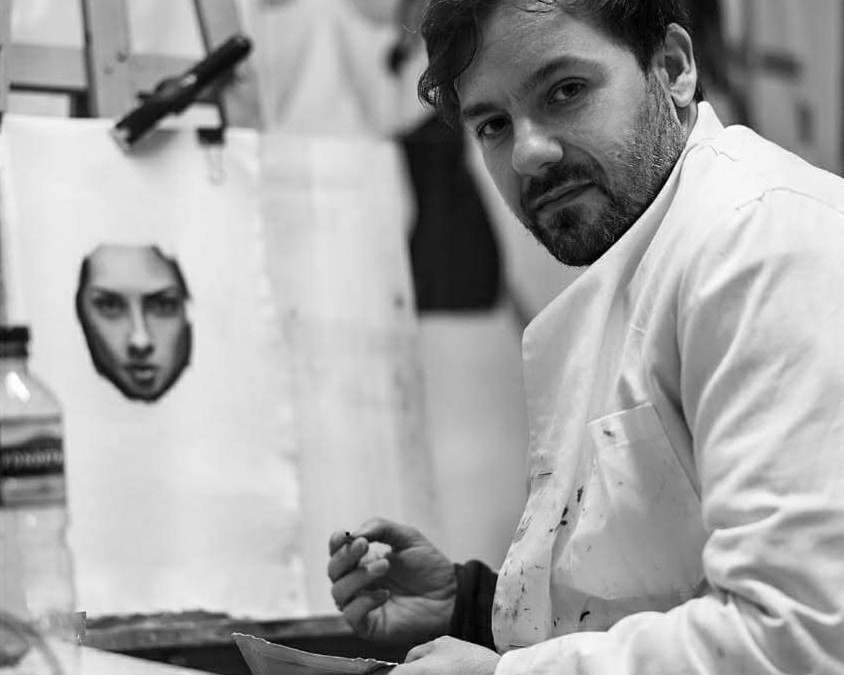

Disclaimer:
“Please note that I am not a professional in this field. I am an artist with a deep curiosity and a passion for learning. The topics I write about are ones that intrigue me, and I find researching and writing about them the best way to enhance my understanding and I hope that sharing these articles might be helpful or interesting to others as well.
Thank you for reading and I hope you liked it!”

